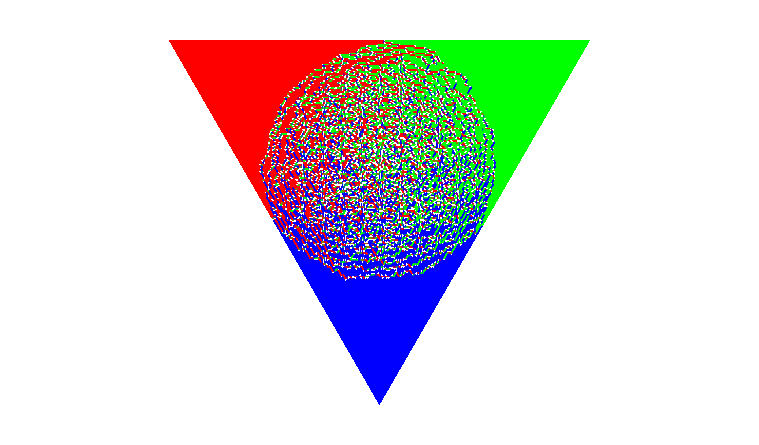

On my wish list is to have a java applet for Groves on standard initials similar to this one for Aztec Diamonds.
I've written some code for maple that draws pretty pictures of groves. I think the algorithm is implementable for java if anyone wants to translate it. Look Here for a picture of a big random grove and my maple code.
I gave a talk at Brandeis on March 12, 2003 about asymptotic behavior in groves. Here is my powerpoint presentation.
Here is a very rough draft of an arctic circle paper I'm writing with David Speyer:
Here are some pictures of some (small) random groves on standard initial conditions. Print them out and color away!
During fall of 2002 I worked on monomer-dimer tilings with John Baldwin, Nick Anzalone, and Ilya Bronshtein.
Some preliminary results for the monomer-dimer question. If you don't have Flash Player, you can download it here.
Here is some maple code that I wrote in early investigations. Save the files below and open them with maple.
For 2 by n rectangles (weights on edges only)
For 1 by n and 2 by n (weights on edges and vertices)
The updated version of the formal paper on monomer-dimer tilings, titled "A reciprocity theorem for monomer-dimer coverings" is below. The version below was last updated on April 14.
source(LaTeX) bibliography figures: mondim1.epsmondim2.epsmondim3.epsmondim4.epsmondim5.epsmondim6.epsmondim7.epsmondim8.epsmondim9.epsmondim10.epsmondim11.eps
A fun question (is there some math here?):
Play the game "Pile Up" five times in a row by only pushing the spacebar. Did you always get past the first level? The board has height 16 and width 8. There are five colors of balls, presented randomly in groups of three and dropped down the center of the board. The balls stack on top of one another in the natural way (some randomness is involved when a ball can fall to the left or right). If four or more balls of the same color are connected, then they are removed from the board and the remaining balls fall to fill the space. The first level is completed when a cumulative total of 80 balls are removed from the board. What is the probability of success when using the 'spacebar' strategy?